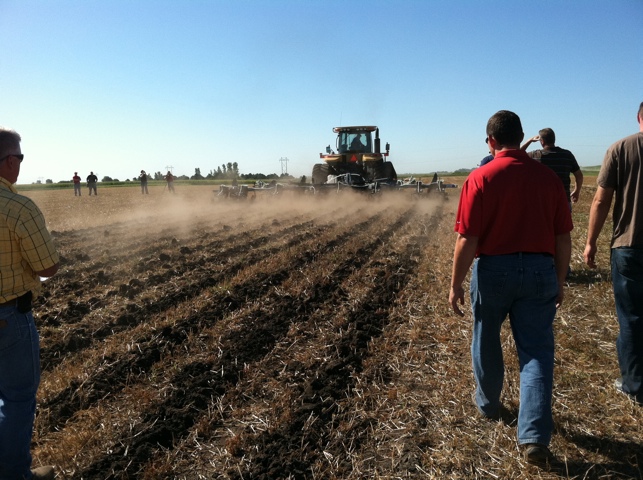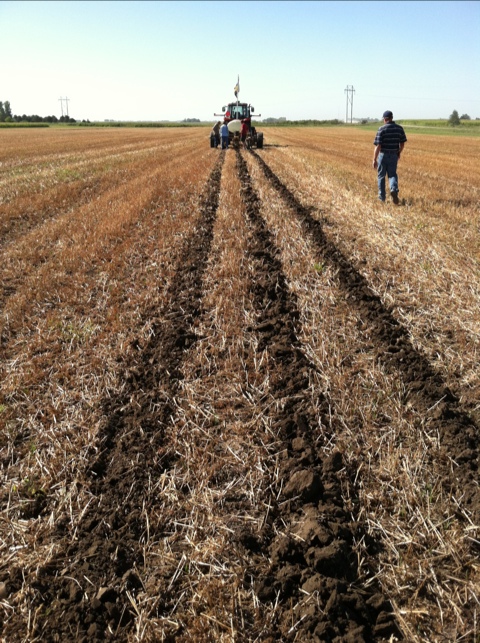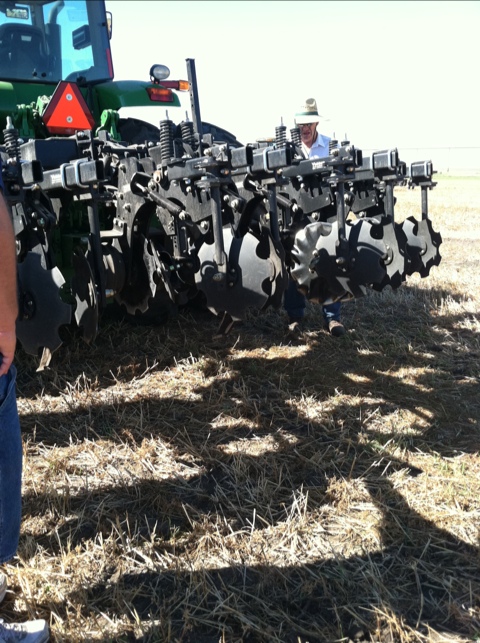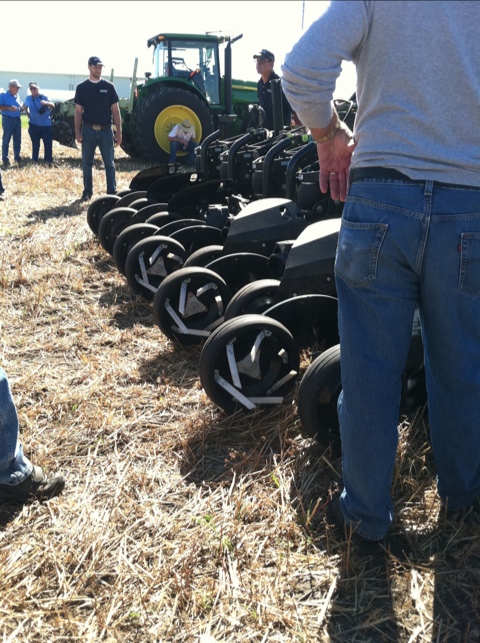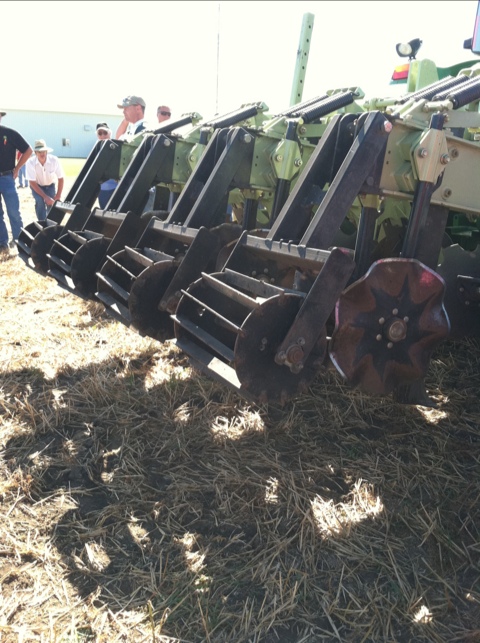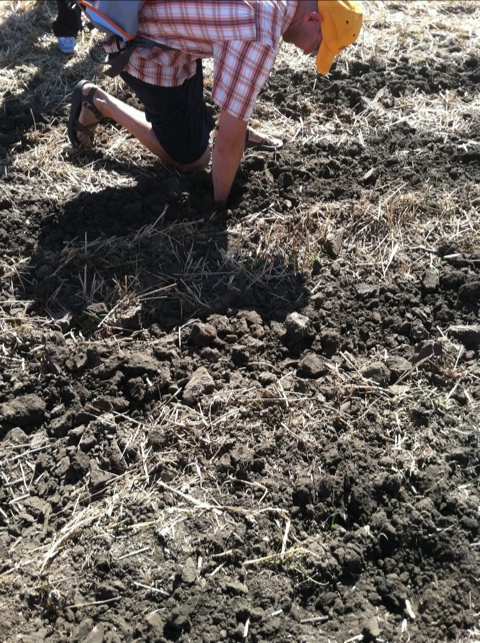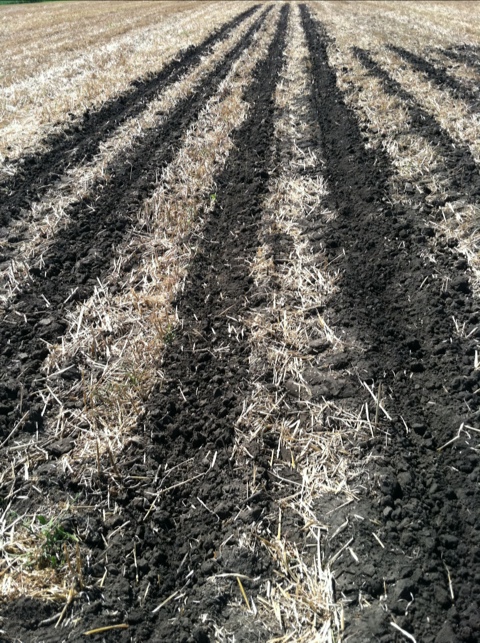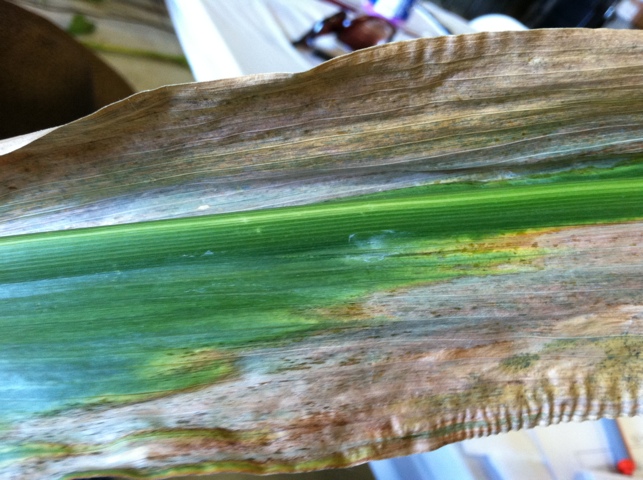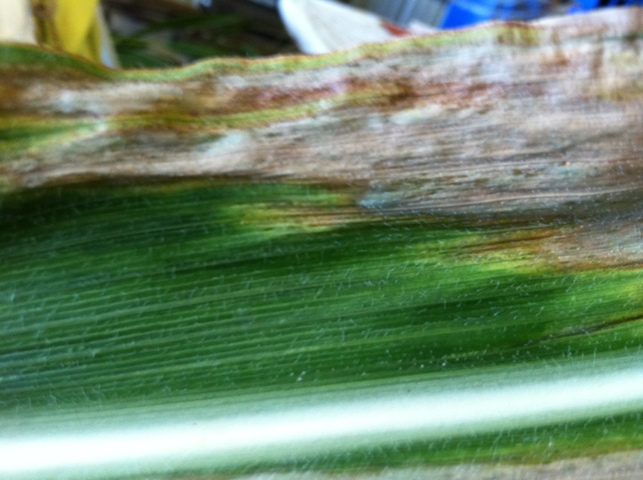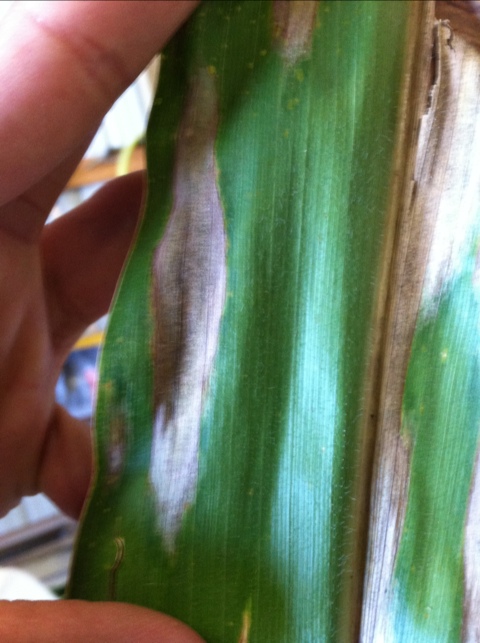I recently attended a field day put on my Iowa State University, to learn more about strip tillage, precision Ag, agronomy from well-known agronomist Roger Elmore, and up and coming crop diseases such as Goss’ Wilt. It was such a great learning experience and a time to see other farmers from Iowa and hear about their concerns and questions.
The morning was filled with field demonstrations with strip tillage tools and the benefits of strip tilling, which include using less fuel for tillage yet still preparing the seed bed for the spring, less compaction on the field, and prevents soil erosion. It is good for fields that have corn planted year after year because the zone where the seed bed lays is prepared by tilling up old roots for less competition.
There were several different implements that displayed similar results, but every company or implement had its pros and cons.
Here are a few pictures of Goss’ Wilt, a bacterial disease that enters a wound site of a corn plant. It can be identified by the long cigar-shaped lesions that ooze a shiny liquid out of black freckles. The spores of the bacteria are carried by the wind and have been seen in fields in Iowa, that travelled from Nebraska. The disease can cut yields dramatically and there is no cure as of yet for the disease. Prevention is the only method and it is not 100%.
